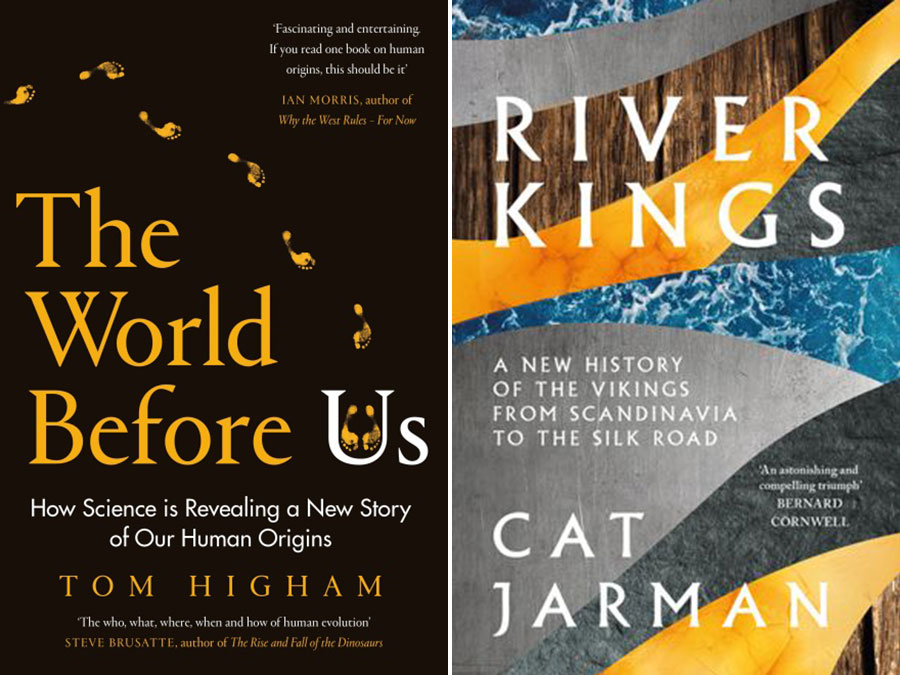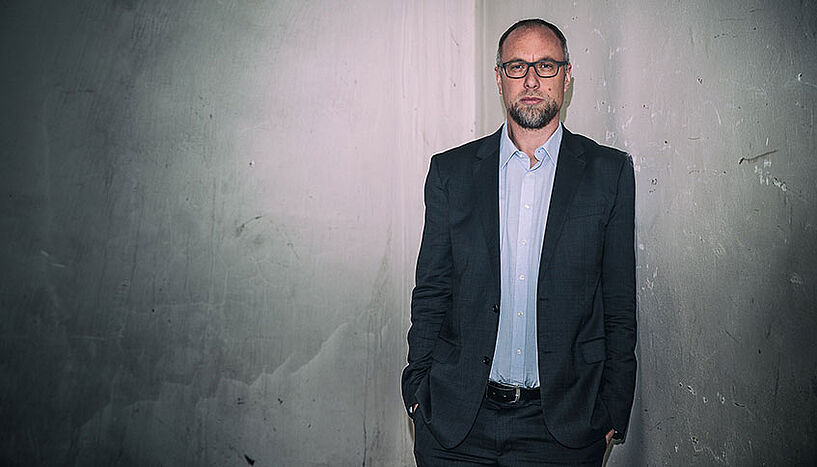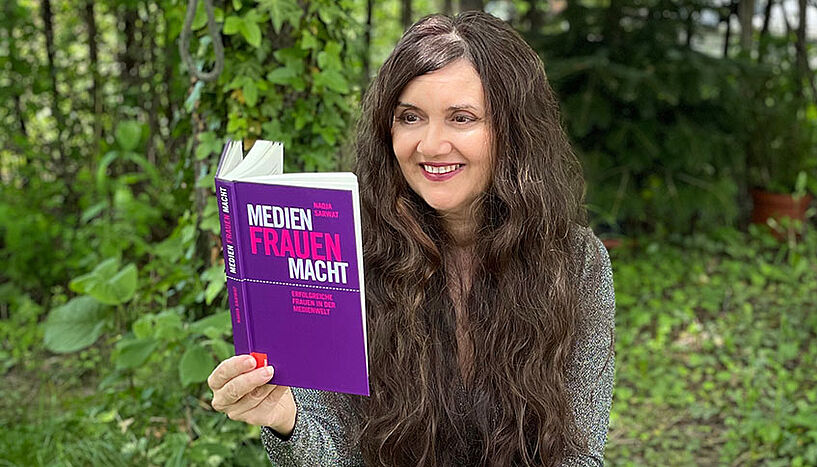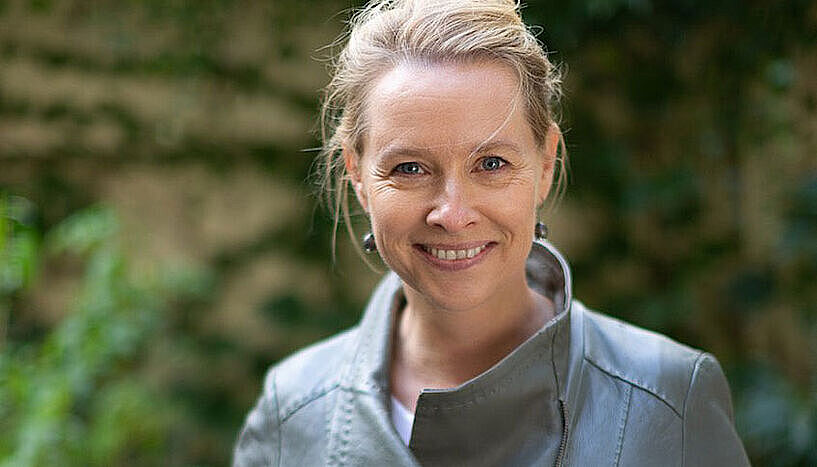Book recommendation by Tom Higham
| 07. September 2021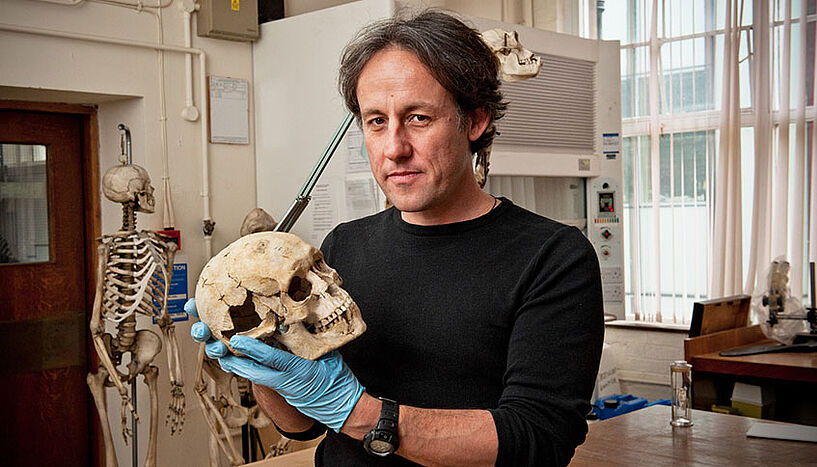
"Science has surged in its importance to the field of human evolution over the last 20 years", says Tom Higham about his area of research. (© Mark Hardy)
The newly appointed Professor of Scientific Archaeology, Tom Higham, is an expert in the field of bioarchaeology and chronology. In his latest publication "The World Before Us" he presents completely new findings in the human evolution.
uni:view: You found out that 50,000 years ago, we were not the only species of humans in the world. In your book "The World Before Us" you reveal the science behind your findings. How much did the other human species differ from us and why is Homo sapiens the only surviving human species?
Tom Higham: Yes, we have evidence now that there were 6-7 or perhaps more different types of human on Earth 50,000 years ago. The most well known of these lost cousins are the Neanderthals. Their physical appearance was a bit different from us; they were shorter and stockier, with more powerful limbs, a larger cranium, no chin and large browridges – but there were some similarities with us too in terms of behaviour. We made similar stone tools until around 45,000 years ago when we see changes in material culture in the archaeological record. It looks as though both groups were modifying their technology and improving it, as well as using new forms of material to make tools. People were decorating themselves, making ornaments and using colourants. Did they influence each other? Did one group copy the other? We are still not completely sure.
We are still working on the question of why Neanderthals and other forms of human, like the Denisovans who we meet in my book, disappeared from the world. One explanation alone is unlikely to be correct, but I think that population size was a key factor. New genetic evidence shows that Neanderthals were fewer in number than Homo sapiens, and this might have left them vulnerable when the groups met. DNA tells us that we interbred with one another, so it is possible too that Neanderthals were assimilated into the wider human population. This disappearance happened around 40,000 years ago.
uni:view: You use radiocarbon dating and investigate ancient DNA. What do these methods tell you?
Higham: Science has surged in its importance to the field of human evolution over the last 20 years. Radiocarbon was developed in the late 1940s but nowadays we use accelerators to measure tiny milligram-sized amounts of material and calculate their age. The ages are now much more precise than before. We use statistical packages to provide even more precision to dating when things happened in ancient times.
DNA has revolutionised archaeology. By extracting ancient DNA sequences from bones, teeth, dental plaque and now even from the soil, we have gained huge insights into ancient humans. We have found that they often interbred with one another. We can use DNA to test the relationships between different humans from the ancient past. My team identified a first generation human hybrid in a cave in Siberia in 2018; the tiny bone of a young girl whose mother was a Neanderthal but whose father was a Denisovan. This genetic detective work shows that different human groups interbred when they met in different parts of Eurasia.
uni:view: In what way do your findings change what we up to now thought about (human) evolution?
Higham: A huge amount has changed in the field of human evolution in a very short time. It turns out that hybridisation is a very important mechanism in explaining the story of humanity. Through ancient genomics we have managed to identify what genes we inherited following interbreeding with our ancient cousins, like Neanderthals and Denisovans, and what these genes do. People living today in Melanesia and Papua New Guinea, for example, have Denisovan genes that give them resistance to tropical diseases. Many inherited genes are associated with immune responses.
As Homo sapiens moved into new and unfamiliar environments they interbred with other types of humans living in these places and this conferred some benefits to them, to allow them to better adapt to life in these places. This includes the ability to live at high altitudes as well as to become better adapted to life in the colder northern latitudes. We owe a great deal to our lost human relatives! It was not all beneficial however, there were also some negative impacts, which we are working to understand. Genes related to Diabetes Type 2, lupus and smoking addictions were inherited from Neanderthals. In terms of human evolution our story was not a simple case of us evolving in Africa and then spreading successfully everywhere displacing other now extinct groups, it was more drawn out and subtle, and involved hybridisation.
uni:view: Through your scientific methods you also got an idea how the other human species lived. Can you give a short insight?
Higham: It’s the 'Golden Age' of research in this field. The range of scientific methods we can apply provides amazing insights into ancient lives, from birth to death. We can use isotopes of carbon and nitrogen in human bone and teeth, for example, to work out when babies were breastfed and when they stopped and were weaned. This gives us insights into the differences between Neanderthals and human children. We can look inside teeth using CT scanners and work out when people suffered periods of stress or starvation. Bones reveal evidence for a tough life and in some cases we can infer that older or more frail people must have been looked after by others in the group, much like we do today. We can work out what people ate based on evidence in dental plaque and in bones, using isotopes, genomics and protein analysis. These various methods help us to build 'life histories' of people from ancient times. Never has it been more possible to bring the past to life!
uni:view: What book do you recommend to our readers?
Higham: "River Kings" by Cat Jarman.
uni:view: Some thoughts on your personal book recommendation?
Higham: "River Kings" is the story of the Vikings and it follows the discovery of a beautiful 'carnelian' bead from a Viking burial in England. The author follows its trail all the way to the east to India, proving that the Norse warriors travelled much further than originally thought. It’s a beautifully written book that slowly reveals its secrets to the reader.
uni:view: You have read the last sentence, close the book. What remains?
Higham: It’s usually a nice deep breath, a few moments of contemplation and silence, then on to the next book!!
Since August 2021 Tom Higham is Professor of Scientific Archaeology at the Department of Evolutionary Anthropology. Before he came to the University of Vienna he was Director of the Oxford Radiocarbon Accelerator Unit. His research areas include Radiocarbon dating using accelerator mass spectrometry, the Middle to Upper Palaeolithic periods of Eurasia, Neanderthals, Denisovans and anatomically modern humans.

